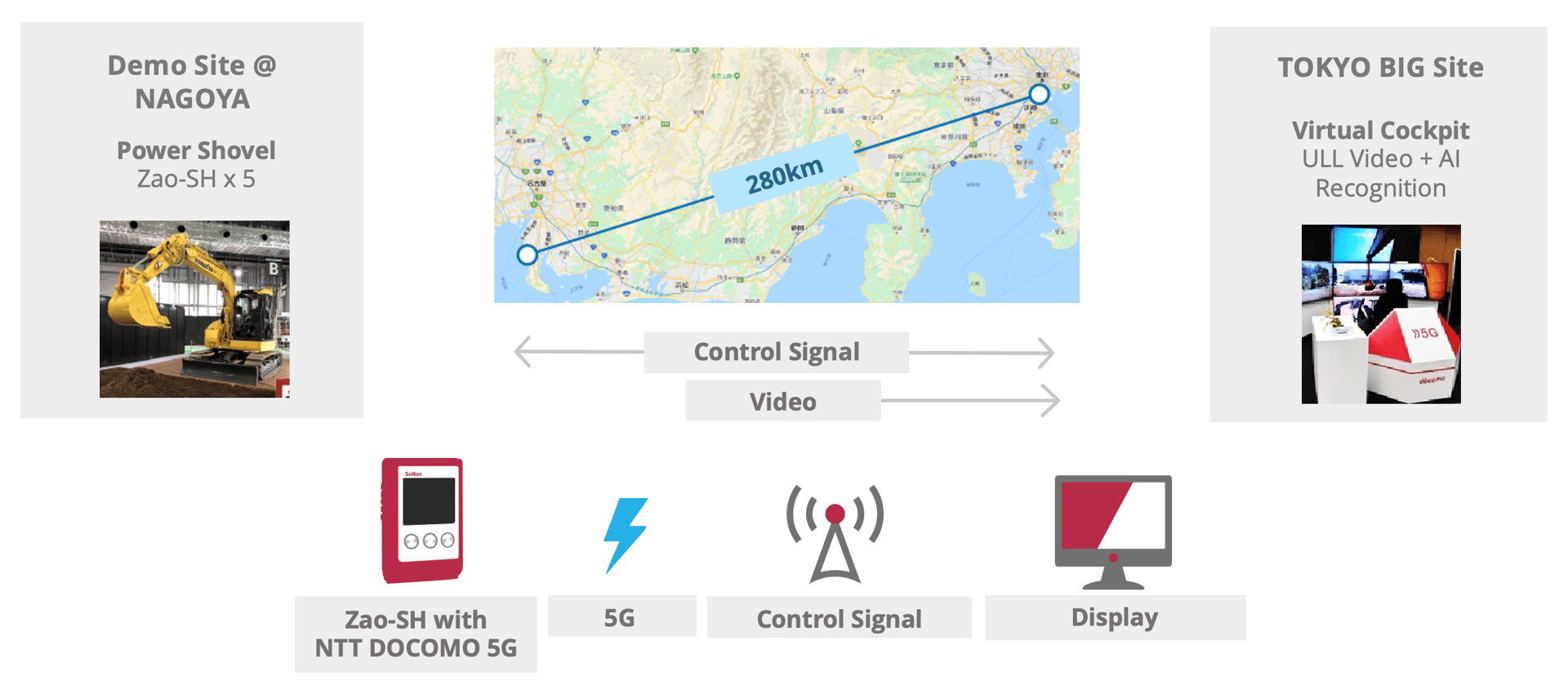With Soliton’s RASCOW2 technology, it is possible to remote control a crane or any other type of heavy machinery over cellular from anywhere in the world with almost zero delay.
RACOW2 is Soliton’s live streaming protocol for highly reliable, broadcast quality video, even over challenging network connections such as 4G in crowded areas where bandwidth maybe limited. RASCOW2 is unique in its ultra low latency over 4G, with delays as low as 65ms, or 35ms over 5G. The same setup can be used for sending a control signal from the remote operator back to the crane for instant operations.
RASCOW2 can come as hardware transmitter with the Zao-X, or as software Zao SDK OEM that can be customized for different set-ups and hardware.
Below video shows how Soliton's Teleoperation Systems is put to use in the world of remote operation of construction and heavy machinery
Leading exhibition of construction and heavy machinery.
This is a real-life example of the Zao-SH in action where a remote digger is being controlled from an operations platfrom in Tokyo that is 280km away.

Teleoperation is defined as the method of remotely controlling machinery, vehicles, or robots from a distant location. This can include heavy machinery such as cranes, diggers, and forklift trucks that are required to operate in hazardous environments. It is particularly advantageous in situations where there is a shortage of qualified personnel on-site or where utilizing cost-effective remote teleoperator workers is preferable.
To operate heavy machinery remotely from a faraway location, real-time visibility through the cockpit window or windshield with minimal delay is crucial, allowing for rapid reactions as if the operator were physically present.
The Soliton Zao Live Streaming solutions enable live video streaming from a remote location to a teleoperator center with high reliability, providing a feedback path for control signals to maneuver and manage the remote machinery effectively.
The Zao video encoding solutions utilize bonded cellular technology to transmit video simultaneously across multiple cellular networks, ensuring a dependable connection without relying on a single SIM card. Additionally, in combination with Soliton's RASCOW2 streaming algorithm, the video can be optimized based on the available bandwidth, allowing for seamless streaming even in challenging environments.
RASCOW2 is Soliton's unique streaming protocol, that in combination with the latest H.265 HEVC codec for compression, ensures a secure, reliable, and low delay transmission solution.
One standout feature of Soliton's technology is its ultra-low latency, with end-to-end latency below 100ms over 4G public networks, from the camera in the vehicle to the receiving monitor—a remarkably swift transmission time rarely seen in the industry. With 5G connectivity, this latency can be further reduced to as little as 35ms.
In the ever-evolving landscape of remote operations, achieving ultra-low latency live streamingis akin to threading a needle in a storm. Whether it’s teledriving autonomous vehicles, controlling robots, or remotely managing critical infrastructure, minimizing latency is paramount. Enter the Zao SDK – a game-changer that propels teleoperation into the fast lane.

Imagine situations in hazardous areas where operating a machine or vehicle is dangerous to human life. For autonomous vehicles, machinery needs to be maneuvered around obstacles or hazards that its sensors and logic cannot understand.
